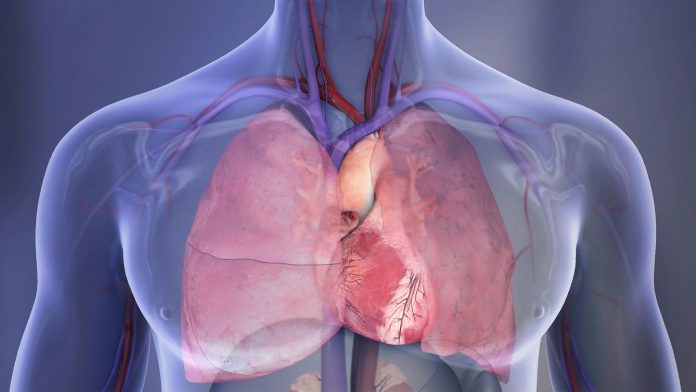About 20% of adults who have major non-cardiac surgery had elevated troponin levels, yet nearly all of them did not have symptoms of injury, according to a new scientific statement from the American Heart Association. People with cardiovascular risk factors such as high blood pressure and type 2 diabetes, as well as those with sleep apnea, anemia, congestive heart failure or who are older than age 75 should be monitored for elevated heart enzymes after surgery to improve outcomes, according to the new statement published today in Circulation, the Association’s flagship journal.
Cardiac-specific troponin is a heart enzyme that is measured when people come to the emergency department with symptoms such as chest pain or shortness of breath. High concentrations of troponin in the blood indicate heart damage consistent with a heart attack, as seen in Myocardial Injury after Non-cardiac Surgery (MINS). MINS, first described in 2014, is a relatively new clinical diagnosis. Although MINS occurs in one of five patients who have major, non-cardiac, inpatient surgery, about 90% of them have no identifiable symptoms, which is distinctly different from heart attacks unrelated to surgery; the absence of symptoms may be due to sedation, anesthesia or analgesic medications after surgery.
The new scientific statement, “Diagnosis and Management of Patients with Myocardial Injury after Non-cardiac Surgery (MINS),” offers clinical perspective on the diagnosis and treatment of MINS, including a review of the definition, risk factors, suggested surveillance and prognosis.
“MINS is serious despite the lack of usual cardiac symptoms,” said Kurt Ruetzler, M.D., Ph.D., FAHA, chair of the scientific statement writing group and an anesthesiology physician in the general anesthesia and the outcomes research departments at the Cleveland Clinic. “Troponin surveillance after surgery will help identify MINS, thus providing opportunity to initiate treatment and appropriate follow-up.”
MINS is more likely to occur in people with preexisting cardiovascular risk factors, including:
Older age (especially individuals over 75 years);
male sex;
high blood pressure;
type 2 diabetes;
congestive heart failure
anemia; and
obstructive sleep apnea.
Additionally, people having emergency surgery are two to three times more likely to experience MINS. Several surgery types are also associated with higher risks of MINS including vascular procedures (like an open aortic repair) and general abdominal surgery.
Since studies have shown nearly 95% of MINS diagnoses occur within two days after surgery, the writing group suggests serial troponin measurements during the first 48 to 72 hours after non-cardiac surgery for patients who are at risk, while hospitalized.
Several large, prospective observational studies have provided strong evidence that high troponin levels after surgery is associated with higher rates of short- and long-term death and major vascular complications, even for people without any symptoms. People with MINS are four times more likely to die within 30 days and are also at higher risk of future heart attacks compared to people without post-operative heart damage.
Adults at increased risk of MINS may need modifications in care before, during and after surgery. Before surgery, a pre-operative MINS risk assessment and measurement of pre-operative troponin levels may help identify people at high risk for MINS and cardiovascular events.
After a diagnosis of MINS, an evaluation by a cardiologist or internist and additional heart testing may be necessary to diagnose and determine the severity of the heart damage. Patients with MINS may also benefit from heart rate and blood pressure control, including consideration for appropriate medications (such as aspirin or cholesterol-lowering medicines) and lifestyle interventions such as smoking cessation, diet and nutrition counseling, stress reduction and regular, moderate-intensity physical activity. It is also advised to optimize management of other cardiovascular risk factors such as type 2 diabetes.
“People who develop MINS remain at high risk for cardiovascular events and death for years after surgery and, thus, they require close follow-up after hospital discharge,” noted Ruetzler.
In a commentary about the statement, Danielle Menosi Gualandro, M.D., Ph.D., said, “This statement is a major step in the field of myocardial injury and hopefully the first step to promote the broad use of troponin screening in people at risk of cardiovascular complications. Increased screening can help to improve patient care and reduce cardiac complications and mortality of patients undergoing non-cardiac surgery.” Gualandro is a clinical cardiologist in the department of cardiology and the Cardiovascular Research Institute Basel, University Hospital Basel at the University of Basel in Basel, Switzerland. She was not a member of the statement writing group, and the commentary is published on Professional Heart Daily, the American Heart Association’s website for professionals.
Ruetzler concluded, “Additional investigation is necessary to determine specific mechanisms of MINS so that targeted therapies can be developed. Efforts to improve recognition and understanding of MINS will ultimately improve outcomes for people after non-cardiac surgery.”
This scientific statement was prepared by the volunteer writing group on behalf of the American Heart Association’s Council on Cardiopulmonary, Critical Care, Perioperative and Resuscitation; the Council on Clinical Cardiology; and the Council on Cardiovascular Surgery and Anesthesia.








